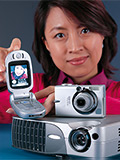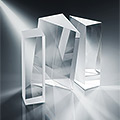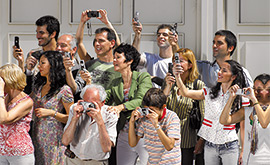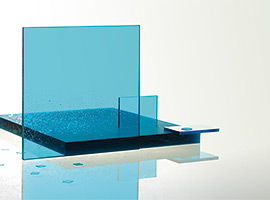”Improving image quality really poses a challenge. The resolution of smartphones is getting better and better while the photo sensor remains the same size. This results in increasingly smaller dimensions of the pixels,” explains Dr. Steffen Reichel from Application Development at SCHOTT Advanced Optics. ”The sensors record light from a wider angle of incidence. The filters made of coated glass that have been used in the past resulted in falsified colors and ghost images. Now, these types of image defects can be avoided with the new blue glass filter glass from SCHOTT,” Reichel adds. It basically puts a pair of sunglasses on the photo sensors and makes these sensors nearly as sensitive to color as the human eye.
Another advantage: whereas with coated glasses the surfaces of the filters can corrode and become hazy when they are exposed to heat and humidity, while going on vacation to Rio’s Copacabana or rainy London, for example, blue glass from SCHOTT is extremely climateresistant.
Even when it is subjected to endurance tests under 85 °C and 85 percent relative humidity, similar to the conditions that a smartphone must endure, the surface of the blue glass filter
remains completely transparent for hundreds of hours and permanently retains its high image quality. ”The filter glasses used in smartphones are extremely small, only around 5 mm x 0.3 mm, and sometimes only 0.21 mm thick. For this reason, we offer blue glass filters with various transmission properties. The standard version is designed to accommodate a thickness of 0.3 mm. Yet another type of blue glass was recently introduced for even thinner filters. After all, smartphones offer very little space,” explains Dr. Marc Clement from Launch Management at SCHOTT Advanced Optics. ”In addition, we also offer customized solutions that improve the quality of the cameras despite increasingly smaller dimensions,” he adds.
The market for camera sensors has been booming for years. They can be found in smartphones, tablets, cell phones with cameras, notebook webcams, digital cameras and camcorders. Other fast-growing niche markets include security and driving assistance systems (rearview cameras) and medical technology (endoscopes). Analysts at Yole Devéloppement estimate that 2.1 billion ”digital eyes” were shipped in 2012 and expect this figure to rise to more than three billion by 2015. According to estimates from the German Imaging Industry Association, 143 million digital cameras will be sold in 2012 (2011: 140 million). However, the ability to connect devices and users via the Internet and mobile communications appears to be what really mobilizes the masses. 75 percent of all image sensors are already being integrated into multifunctional mobile devices. 700 million smartphones (2011: 450 million) were purchased in 2012 and are exciting completely new customer segments for photography.
Visionary development – pragmatic manufacturing
”Thanks to its dynamic growth, digital photography is increasingly setting the pace in the optoelectronic industry,” says Gregor Grosse, Director of Sales & Marketing for Asia at SCHOTT Advanced Optics. ”Device manufacturers are under immense pressure to innovate. Therefore, they rely on flexible development partners who are also capable of reliably supplying them with components in high quantities and consistently high quality.” SCHOTT is one such company with its broad range of optical glass products for use in high-quality objective lenses as well as prisms for single-lens reflex cameras and 3-D projectors. Our technology firm also offers SCHOTT Xensation® Cover, the toughest cover glass available today for touch displays, and wafers and substrates for use in manufacturing image sensors, not to mention a wide range of optical filter glasses.
Digital camera: from 0.01 to 41 megapixels
He was the visionary. A major milestone in electronic light detection was laid when the physicist Albert Einstein described the nature of the photoelectric effect in 1905. Einstein was awarded a Nobel Prize for this achievement. It still took decades, however, before the technologies needed to mass manufacture digital cameras in an economical manner became available. Steven J. Sasson (see picture) from Kodak managed to develop the first digital camera in 1975. It weighed four kilograms and took 23 seconds to record an image on a cassette and another 23 to read it out. Sasson used a “Charge-coupled Device” (CCD) to do the recording. This image sensor had been invented six years earlier and delivered resolution of 0.01 megapixels (MP) at the time. With the turn of the millennium, digital cameras began offering the resolution of at least 2 MP necessary in order to print photographs. In most cases, a CMOS sensor was used. The first cell phone with an integrated camera was launched in 1999 and featured resolution of 0.01 MP. Today‘s top devices feature a sensor that offers 41 MP. This now enables high image quality even for zoom shots.








